Abstract
A new plant manufacturing toluene diisocyanate (TDI) has provided a unique opportunity to investigate the effects of TDI vapor inhalation on respiratory health in a group of exposed workers who have been studied prior to the start of plant operation. In order to establish dose-response relationships and determine host factors, complete biologic monitoring, including pulmonary function and immunologic studies, has been performed concurrently with a comprehensive environmental monitoring program including continuous sampling for atmospheric concentrations of TDI. Study groups include workers with regular exposure to TDI in production jobs (83), workers with intermittent contact with this vapor, usually in maintenance (28), and a control group of workers employed outside the TDI area (55). This population is being followed for a period of 5 yr. The plant began operations in August 1973 with start-up procedures completed by the end of October. TDI spills occurred for numerous reasons, usually attributed to pump failure and resultant line blockage. Significant exposures also occurred in the drumming operation. The influence of these malfunctions is noted in the continuous monitoring data on atmospheric TDI concentrations which continue to reveal frequent excursions above the threshold limit value (TLV) of 0.02 ppm ceiling. These data are presented in relation to time and plant location. Although the first full year follow-up following initial exposure was not complete, certain preliminary clinical observations were made. A number of workers had episodes of acute respiratory symptoms related to single exposure to an irritant gas at work, usually either TDI or phosgene. It appears that two or three workers in the study population have become "clinically sensitized" to TDI and have been removed from regular TDI exposure. To date, the total number of workers who report the presence of recurring respiratory symptoms has not increased in comparison with the pre-exposure survey. Pulmonary function data after one full year of TDI exposure are not yet available. Pre- and post-shift ventilatory function studies do not indicate significant differences between the exposed and control groups. Selected individuals had carefully controlled inhalation challenge tests to monitored concentrations of TDI vapor under laboratory conditions. In workers suspected of having become "sensitized", immediate and/or late air flow obstruction was demonstrated and could be related to dose of inhaled TDI.
Full text
PDF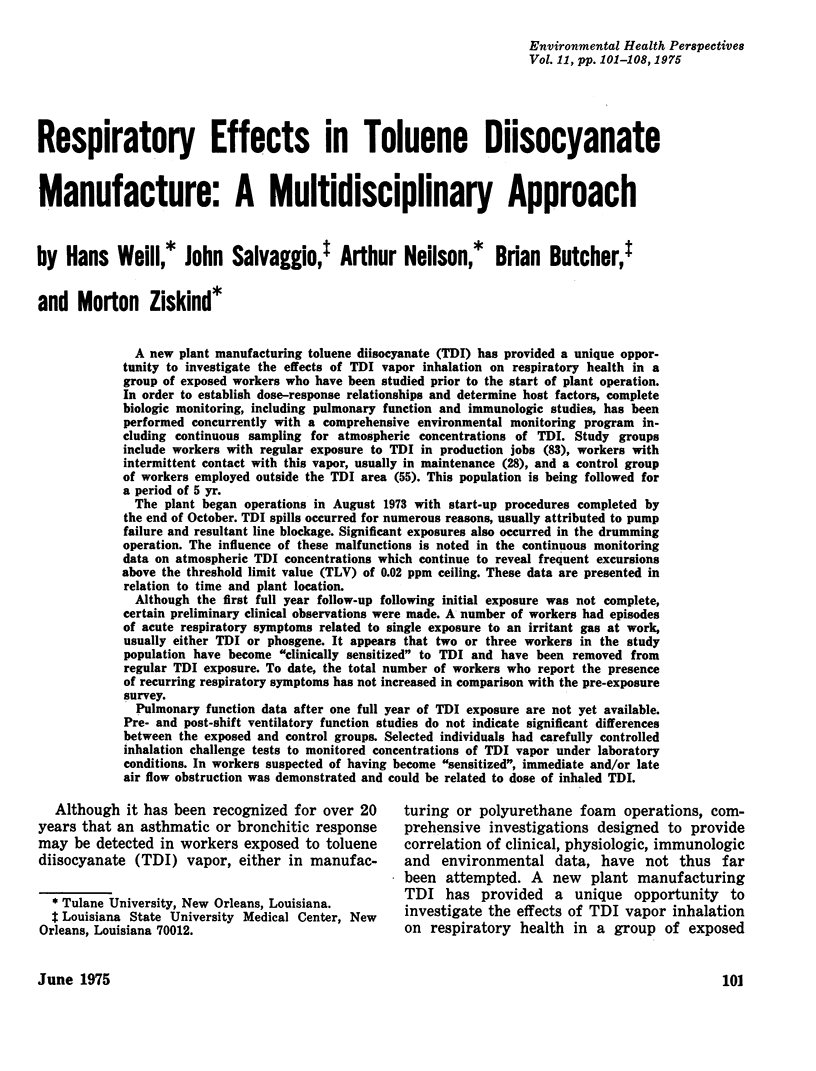
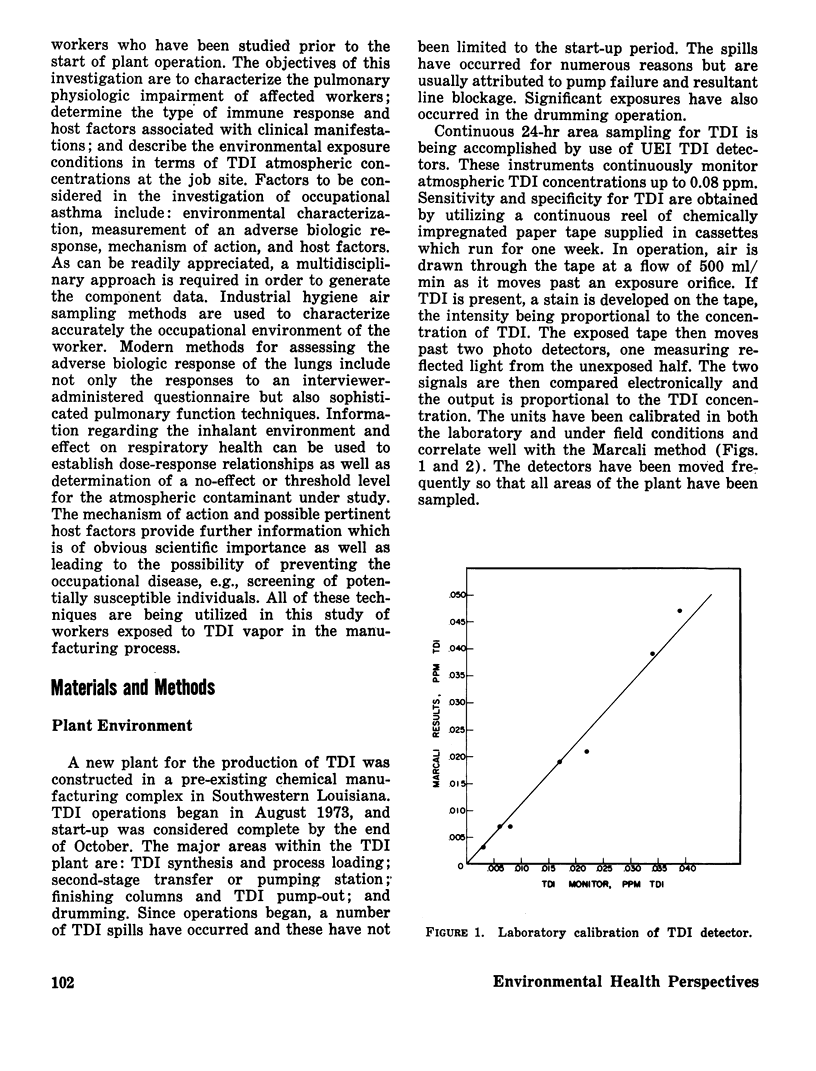
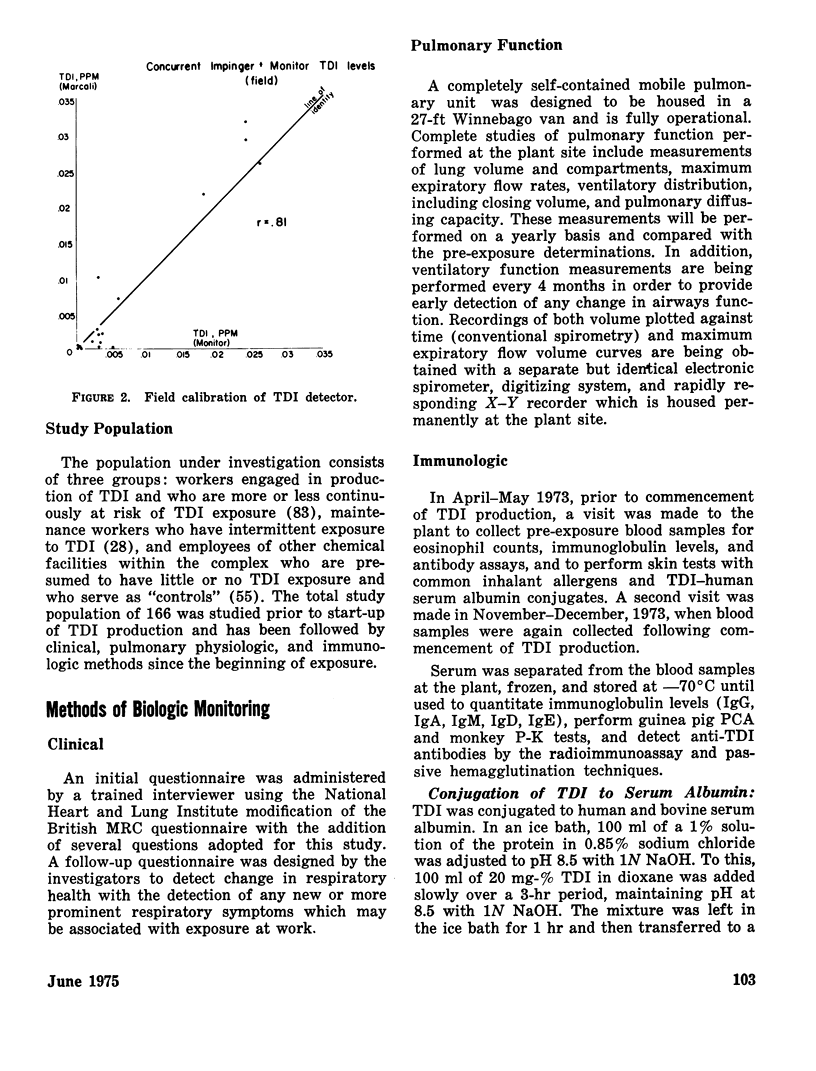

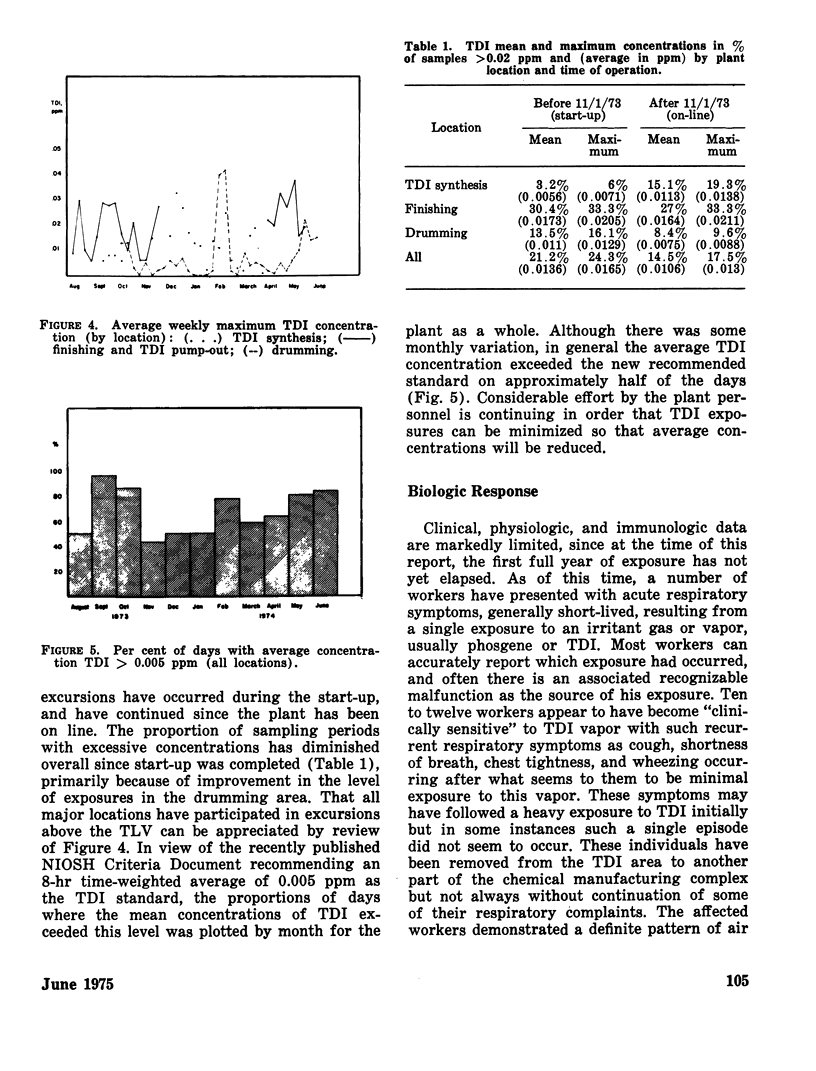
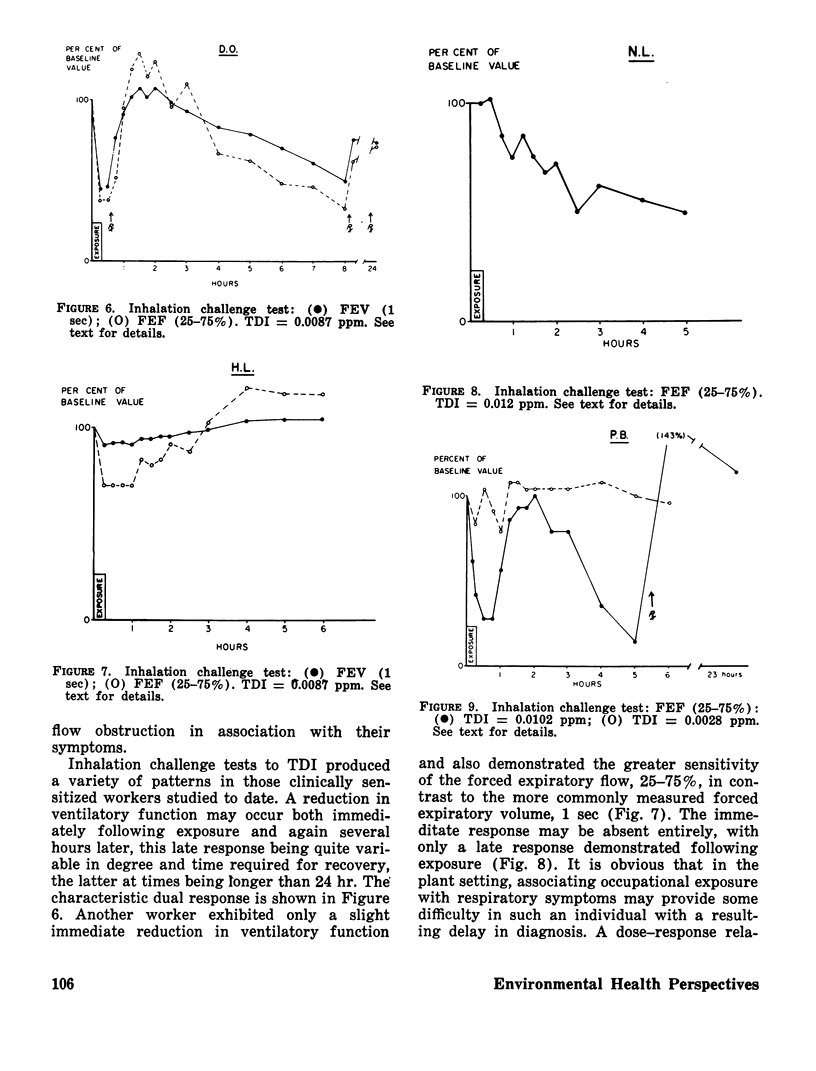
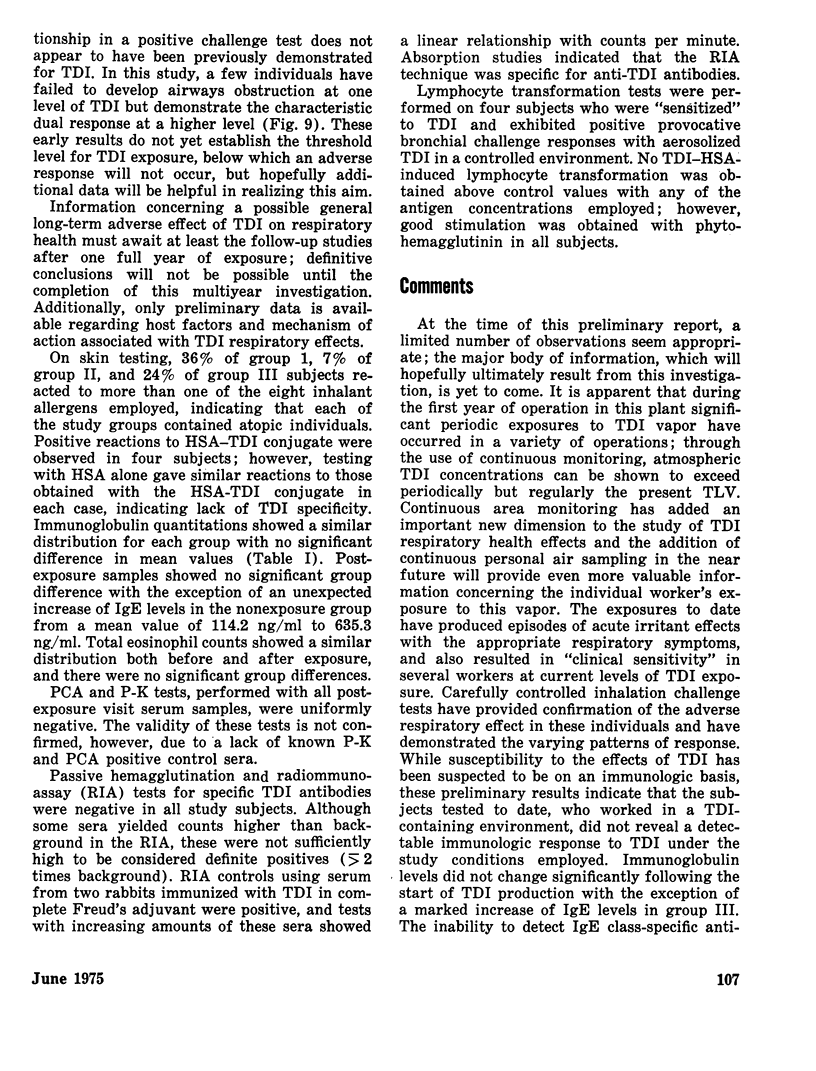
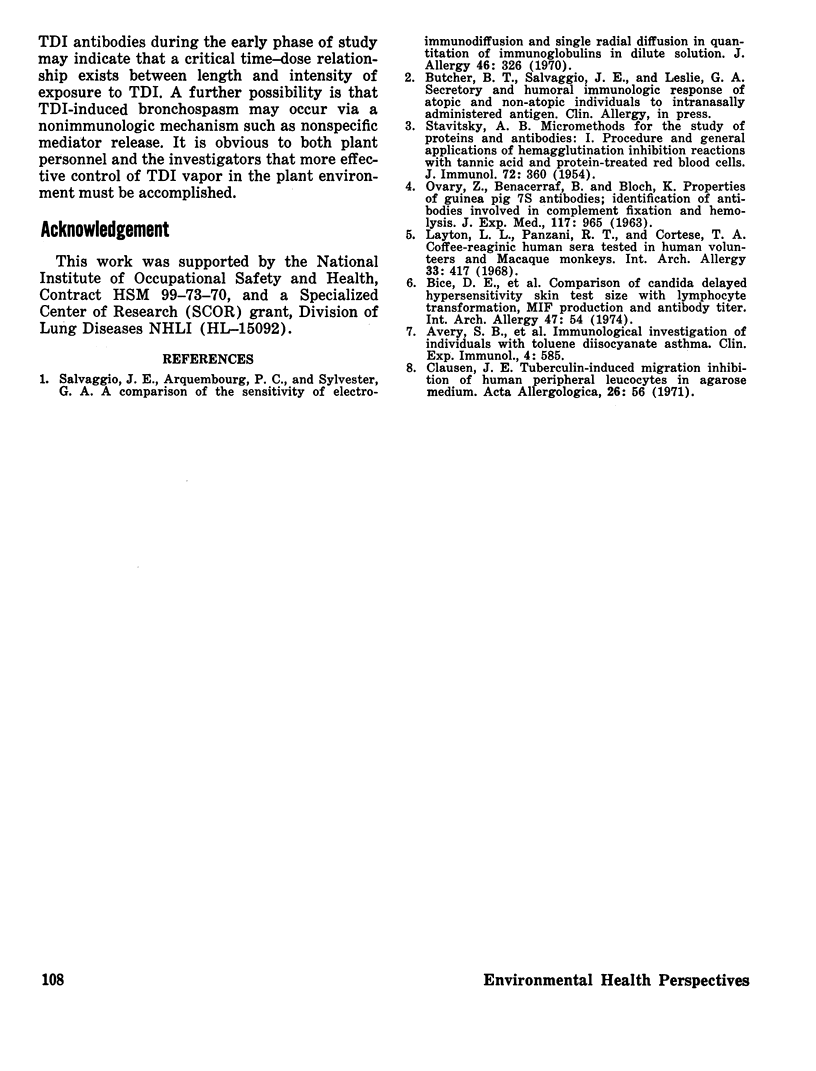
Selected References
These references are in PubMed. This may not be the complete list of references from this article.
- Avery S. B., Stetson D. M., Pan P. M., Mathews K. P. Immunological investigation of individuals with toluene diisocyanate asthma. Clin Exp Immunol. 1969 May;4(5):585–596. [PMC free article] [PubMed] [Google Scholar]
- BLOCH K. J., KOURILSKY F. M., OVARY Z., BENACERRAF B. Properties of guinea pig 7S antibodies. III. Identification of antibodies involved in complement fixation and hemolysis. J Exp Med. 1963 Jun 1;117:965–981. doi: 10.1084/jem.117.6.965. [DOI] [PMC free article] [PubMed] [Google Scholar]
- Bice D. E., Lopez M., Rothschild H., Salvaggio J. Comparison of Candida-delayed hypersensitivity skin test size with lymphocyte transformation, migration inhibitory factor production and antibody titer. Int Arch Allergy Appl Immunol. 1974;47(1):54–62. doi: 10.1159/000231200. [DOI] [PubMed] [Google Scholar]
- Layton L. L., Panzani R., Cortese T. A. Coffee-reaginic human sera tested in human volunteers and macaque monkeys. Absence of reactions to chlorogenic acid. Int Arch Allergy Appl Immunol. 1968;33(5):417–427. doi: 10.1159/000230057. [DOI] [PubMed] [Google Scholar]
- STAVITSKY A. B. Micromethods for the study of proteins and antibodies. I. Procedure and general applications of hemagglutination and hemagglutination-inhibition reactions with tannic acid and protein-treated red blood cells. J Immunol. 1954 May;72(5):360–367. [PubMed] [Google Scholar]
- Salvaggio J. E., Arquembourg P. C., Sylvester G. A. A comparison of the sensitivity of electroimmunodiffusion and single radial diffusion in quantitation of immunoglobulins in dilute solution. J Allergy. 1970 Dec;46(6):326–335. doi: 10.1016/0021-8707(70)90083-3. [DOI] [PubMed] [Google Scholar]


